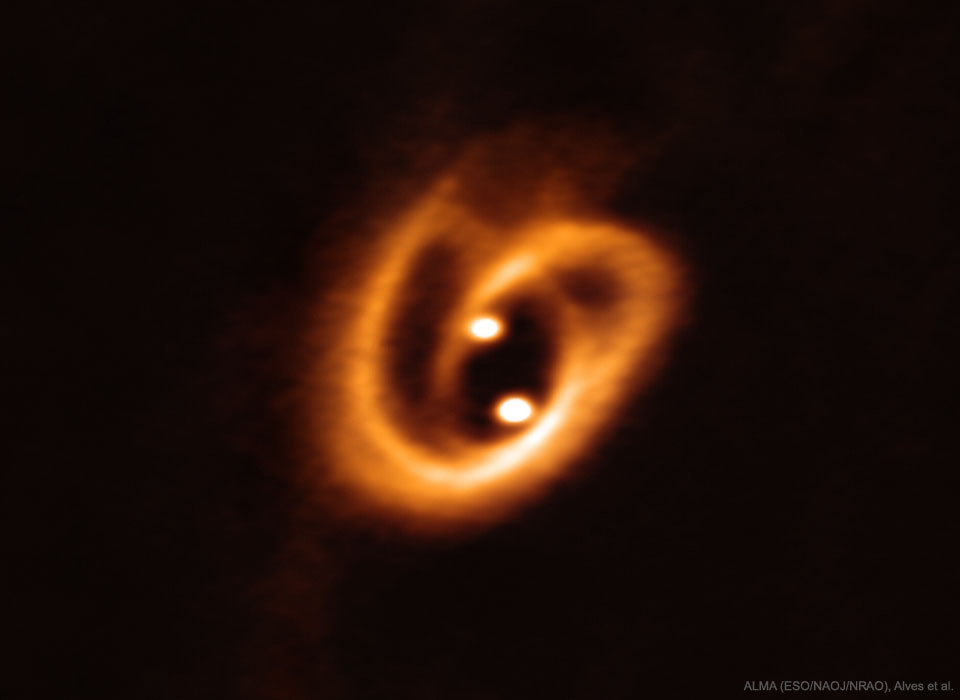2019 October 16
BHB2007: A Baby Binary Star in Formation
Image Credit: ALMA (ESO/NAOJ/NRAO), F. O. Alves et al.
Explanation: How do binary stars form? To help find out, ESO’s Atacama Large Millimeter Array (ALMA) recently captured one of the highest resolution images yet taken of a binary star system in formation. Most stars are not alone — they typically form as part of a multiple star systems where star each orbits a common center of gravity. The two bright spots in the featured image are small disks that surround the forming proto-stars in [BHB2007] 11, while the surrounding pretzel-shaped filaments are gas and dust that have been gravitationally pulled from a larger disk. The circumstellar filaments span roughly the radius of the orbit of Neptune. The BHB2007 system is a small part of the Pipe Nebula (also known as Barnard 59), a photogenic network of dust and gas that protrudes from Milky Way’s spiral disk in the constellation of Ophiuchus. The binary star formation process should be complete within a few million years.
BHB2007:形成中的双星系统
影像来源: ALMA (ESO/NAOJ/NRAO), F. O. Alves et al.
说明:双星是如何形成的?为了找到答案,欧洲南方天文台的阿塔卡马大型毫米波阵列(ALMA)最近捕捉到形成中的双星系统影像是迄今为止所拍摄的最高分辨率影像之一。大多数恒星并不孤单,它们通常是多星系统的一部分,每个恒星都围绕着一个共同的重心运行。这幅特征影像中的两个亮斑是环绕在[BHB2007] 11中正在形成的原恒星周围的小星盘,而周围的椒盐卷饼状细丝结构则是从一个更大星盘被引力吸出来的气体和尘埃。环绕恒星的丝状结构大约跨越了海王星轨道的半径范围。 BHB2007系统是烟斗星云(亦称为Barnard 59)的一小部分,该星云是一个由尘埃和气体构成的发光网状结构,它形成于蛇夫座内银河系的旋涡状盘面。双星系统的形成过程将在数百万年内完成。







